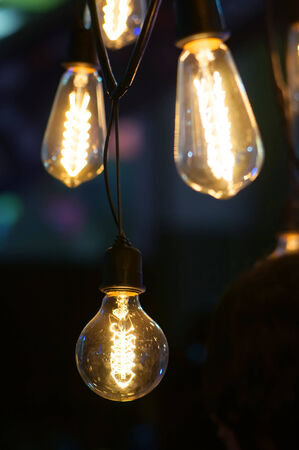Introduction to Smart Lighting in British Homes
In recent years, smart lighting solutions have swiftly become a cornerstone of modern British homes. As households across the UK increasingly embrace technology-driven upgrades, smart lighting is playing a pivotal role not only in enhancing convenience and comfort but also in supporting national sustainability initiatives. From traditional terraced houses in London to contemporary apartments in Manchester, homeowners are integrating automated lighting systems to improve energy efficiency and reduce their environmental footprint. This rising trend reflects a broader commitment within the UK to adopt innovative home improvement measures that align with both practical needs and green living principles. As more British families recognise the value of intelligent lighting control, these systems are setting new standards for home maintenance and responsible energy consumption.
2. Key Features and Technologies in Smart Lighting
Smart lighting solutions have become increasingly popular in British homes, offering not only convenience but also notable energy savings and improved security. The core technologies driving these benefits are tailored to suit the unique needs and preferences of UK households. Below, we explore the essential features and technologies that set smart lighting apart.
Motion Sensors: Enhancing Efficiency and Security
Motion sensors are a staple in modern British smart homes. These sensors automatically turn lights on when movement is detected and off when rooms are vacant, reducing unnecessary energy consumption. This feature is especially useful for hallways, staircases, garages, and outdoor spaces—areas where lights are often left on by mistake. Moreover, integrating motion sensors with external lighting enhances home security by deterring unwanted visitors during the night.
Dimmable LEDs: Customised Ambience and Lower Bills
Dimmable LED bulbs have revolutionised interior lighting by allowing homeowners to adjust brightness according to mood or activity. In UK households, this adaptability is highly valued in living rooms, bedrooms, and dining areas. Dimming lights not only creates a cosy atmosphere but also extends bulb lifespan and reduces energy usage—a double win for both comfort and sustainability.
App-Based Controls: Total Command from Anywhere
One of the most appealing aspects of smart lighting for British residents is app-based control. Using smartphones or tablets, users can schedule lighting routines, turn lights on or off remotely, and even integrate voice commands via assistants like Alexa or Google Home. This level of control proves invaluable for busy families or frequent travellers who want peace of mind about their home’s energy use and security.
Popular Smart Lighting Features in British Homes
| Feature | Benefit | Common Locations |
|---|---|---|
| Motion Sensors | Automatic activation/deactivation; increased security | Hallways, entrances, gardens |
| Dimmable LEDs | Customisable ambience; energy savings | Living rooms, bedrooms, dining rooms |
| App-Based Control | Remote access; scheduling; voice integration | Whole house |
| Smart Switches/Plugs | Easily retrofit existing fittings; expand automation options | Kitchens, utility rooms |
| Energy Monitoring Features | Track usage; identify savings opportunities | Main circuit panels; specific light circuits |
Integration with Daily Life in Britain
The popularity of these features stems from their ability to adapt to the distinctive architecture of British homes—often featuring narrow corridors, multi-level layouts, and period details that benefit from flexible lighting schemes. By combining these technologies, UK homeowners enjoy both practical functionality and significant reductions in energy consumption.

3. Automation and Customisation for Everyday Living
One of the standout features of smart lighting in British homes is the ability to automate and personalise lighting according to daily routines and personal preferences. With advanced automation systems, residents can set up tailored schedules that align with their unique lifestyles, whether its a gentle wake-up sequence on dark winter mornings or a cosy dimmed ambience for winding down in the evening. Smart lighting controls enable homeowners to fine-tune brightness, colour temperature, and even light zones throughout their property, ensuring every room reflects the right mood at the right time. By integrating these solutions with voice assistants or mobile apps, managing home lighting becomes effortless and intuitive—residents can adjust settings remotely or let sensors do the work, responding automatically to occupancy or natural light levels. This not only adds a layer of convenience but also supports energy conservation by ensuring lights are only on when needed, perfectly suiting the needs and habits of modern British households.
4. Energy Conservation and Cost Savings
Smart lighting solutions play a pivotal role in driving energy conservation across British homes, offering homeowners both environmental and financial benefits. By harnessing advanced automation features such as motion sensors, scheduling, and daylight harvesting, smart lighting systems ensure that lights are only used when necessary, significantly reducing unnecessary energy consumption. This focus on efficiency not only lowers electricity bills but also supports the UK’s commitment to sustainability and carbon reduction.
How Smart Lighting Reduces Energy Use
Traditional lighting often relies on manual operation, which can lead to lights being left on longer than needed or used in unoccupied rooms. Smart lighting automates these processes, adapting usage patterns based on occupancy and natural light levels. The integration of LED technology further enhances efficiency, as LEDs use up to 75% less energy compared to conventional bulbs and have a much longer lifespan.
Comparison of Annual Energy Consumption
| Lighting Type | Average Annual Consumption (kWh) | Estimated Annual Cost (£)* |
|---|---|---|
| Traditional Incandescent Bulbs | 450 | £90 |
| Standard LEDs (Non-Smart) | 112 | £22 |
| Smart LED System (with Automation) | 80 | £16 |
*Based on average usage in a three-bedroom UK home and standard electricity rates.
Supporting UK Sustainability Goals
The adoption of smart lighting aligns with national policies aimed at reducing household carbon emissions and promoting renewable energy use. As the UK government intensifies its efforts to achieve net-zero emissions by 2050, incorporating smart technologies like automated lighting helps households contribute to this vision. Moreover, many local councils offer incentives for energy-efficient upgrades, making the transition more accessible for British homeowners.
Financial and Environmental Payback
While there is an initial investment associated with installing smart lighting systems, the long-term savings on energy bills quickly offset these costs. In addition to the financial benefits, reduced electricity consumption means fewer fossil fuels burned for power generation, directly supporting a cleaner environment and a more sustainable future for communities across the UK.
5. Integration with British Home Infrastructure
When considering smart lighting solutions for British homes, it is essential to assess their compatibility with the unique aspects of UK infrastructure. Most traditional UK properties use a ring main circuit and often lack a neutral wire at the light switch, which can pose challenges when installing certain types of smart light switches or dimmers. Homeowners should look for smart devices specifically designed for the UK market, which work seamlessly with the existing wiring standards. Additionally, for listed buildings and period properties—common throughout Britain—preserving architectural integrity is paramount. Wireless smart bulbs and retrofit solutions that do not require extensive rewiring are preferred to minimise disruption to historic interiors. Integration with popular British smart home platforms such as Hive, Lightwave, and Philips Hue is also crucial for streamlined automation and control. These platforms typically offer compatibility with voice assistants like Amazon Alexa and Google Assistant, allowing users to manage lighting hands-free. Furthermore, most major energy suppliers in the UK now provide smart home solutions that easily link with their customer accounts, offering even greater convenience and efficiency. By carefully considering these factors, homeowners can ensure their smart lighting upgrades align with both regulatory requirements and the practical realities of British residential infrastructure.
6. Practical Considerations and Maintenance
When installing smart lighting solutions in British homes, it is essential to adhere to both technical best practices and UK-specific regulations. Below, we outline key aspects of installation, troubleshooting, and ongoing maintenance to ensure your system remains efficient, safe, and compliant.
Installation: Getting It Right from the Start
Proper installation is fundamental to the performance and safety of smart lighting systems. In the UK, all electrical installations must comply with the IET Wiring Regulations (BS 7671), commonly known as the 18th Edition. Homeowners should consider engaging a qualified electrician registered with a competent person scheme (such as NICEIC or NAPIT) to ensure legal compliance. Additionally, it is wise to check for compatibility between your existing fixtures and smart devices, especially with older wiring common in British homes. Properly labelled consumer units and clear circuit diagrams will assist future troubleshooting.
Troubleshooting: Addressing Common Issues
Even well-installed systems can encounter issues. Frequent problems include connectivity drops due to thick brick walls or interference from other wireless devices—both common in UK properties. To mitigate this, position hubs centrally and consider mesh networks for larger homes. If bulbs flicker or fail to respond, check firmware updates via manufacturer apps, verify your Wi-Fi connection, and inspect the integrity of wiring connections. For persistent faults, consult your device’s support documentation or seek professional advice rather than attempting risky DIY repairs.
Ongoing Maintenance: Keeping Your System Efficient
Smart lighting systems require regular care for optimal performance. Schedule routine checks every six months: test automated routines, update software and firmware on all connected devices, and clean sensors and switches from dust accumulation that might impede operation. Replace batteries in wireless switches or motion sensors as needed, and periodically review energy consumption data—many British energy suppliers now provide integration options with their smart meters.
Regulatory Compliance & Safety Checks
Always keep records of installation certificates and any maintenance work performed; this documentation is invaluable for property sales or insurance claims. If you plan significant alterations or upgrades involving mains wiring, notify your local authority’s Building Control department under Part P of the Building Regulations. Finally, conduct annual visual inspections for signs of wear or overheating at connection points—a prudent step for any responsible homeowner.
Best Practices for Longevity
Use high-quality components recommended by reputable UK retailers to avoid compatibility issues and premature failure. Educate household members about safe use—especially regarding manual overrides—and set up guest modes where appropriate. By following these practical considerations, British homeowners can enjoy the full benefits of automation and energy conservation while maintaining a safe and reliable lighting environment.
7. Future Outlook for Smart Lighting in the UK
The future of smart lighting in British homes is set to be shaped by a range of emerging trends, government initiatives, and ongoing technological advancements. As awareness around energy conservation grows and the demand for sustainable living intensifies, British households are increasingly embracing automation to achieve both comfort and efficiency.
Emerging Trends in Smart Lighting
One notable trend is the integration of artificial intelligence and machine learning within lighting systems. Modern smart lights are becoming more intuitive, learning user habits and automatically adjusting brightness or colour temperature based on time of day or occupancy patterns. Voice control and compatibility with major home assistants like Amazon Alexa and Google Home are also becoming standard features, making it easier than ever for homeowners to control their environment.
Government Incentives and Regulations
The UK government continues to encourage energy-saving technologies through various schemes and incentives. For instance, grants and tax reliefs under initiatives like the Green Homes Grant have made it more accessible for homeowners to invest in smart lighting as part of broader home improvement projects. Additionally, tighter regulations on energy consumption and a national drive towards net-zero carbon emissions are likely to further boost adoption rates across the country.
Integration with Broader Smart Home Ecosystems
Looking ahead, smart lighting solutions will play an increasingly central role in connected home ecosystems. Integration with security systems, heating controls, and even renewable energy sources like solar panels is becoming more common. These holistic solutions not only enhance convenience but also ensure that every component works together to minimise energy waste.
Evolving Design Preferences
British homeowners are also showing greater interest in customisable lighting options that blend seamlessly with period properties as well as modern builds. Manufacturers are responding with discreet fittings, heritage-style fixtures compatible with smart bulbs, and a wide array of finishes suitable for all interiors.
A Sustainable Path Forward
As technology continues to evolve, the focus on sustainability, user-friendly automation, and increased connectivity will remain at the forefront. With supportive government policies and growing public interest, smart lighting is poised to become an integral feature in homes across the UK—helping residents save energy, reduce costs, and create comfortable living spaces tailored to their individual needs.


